Our partner, XM, lets you access a free demo account to apply your knowledge.
No hidden costs, no tricks.

Trading stocks is usually intense, and investors enjoy the thrill of watching corporations’ stock prices go up and down after every bit of news is released. You might think that stock trading is difficult because of how big it is, but in fact, you only need to implement the right strategy.
Regardless of how comprehensive share trading is, there are some stock trading strategies most traders use, and luckily you can learn from them and implement whatever suits your trading style best.
Using a trading strategy that most traders use might increase your chances of making profits because these steps are followed by wealthy investors, which means that the strategy is successful with them, and might be the same with you.
“In this business, if you’re good, you’re right six times out of ten. You’re never going to be right nine times out of ten.” - Peter Lynch
In the following, we will explain the best stock trading strategies in detail. You can choose the one(s) that best suits your style and expectations.

News trading implies taking decisions about a trading position after the release of news or a public statement. It means that the news released will have a direct or indirect impact on a specific stock price.
This trading strategy requires a skilled trader who can analyze the impact of the news on the stock market, and whether a specific stock price will increase or decrease. A trader needs to act quickly in order to benefit from the upcoming price changes.
The trader also needs to have direct access to the source of the information, listen to the news, and react before the news makes its way through digital means of communication.
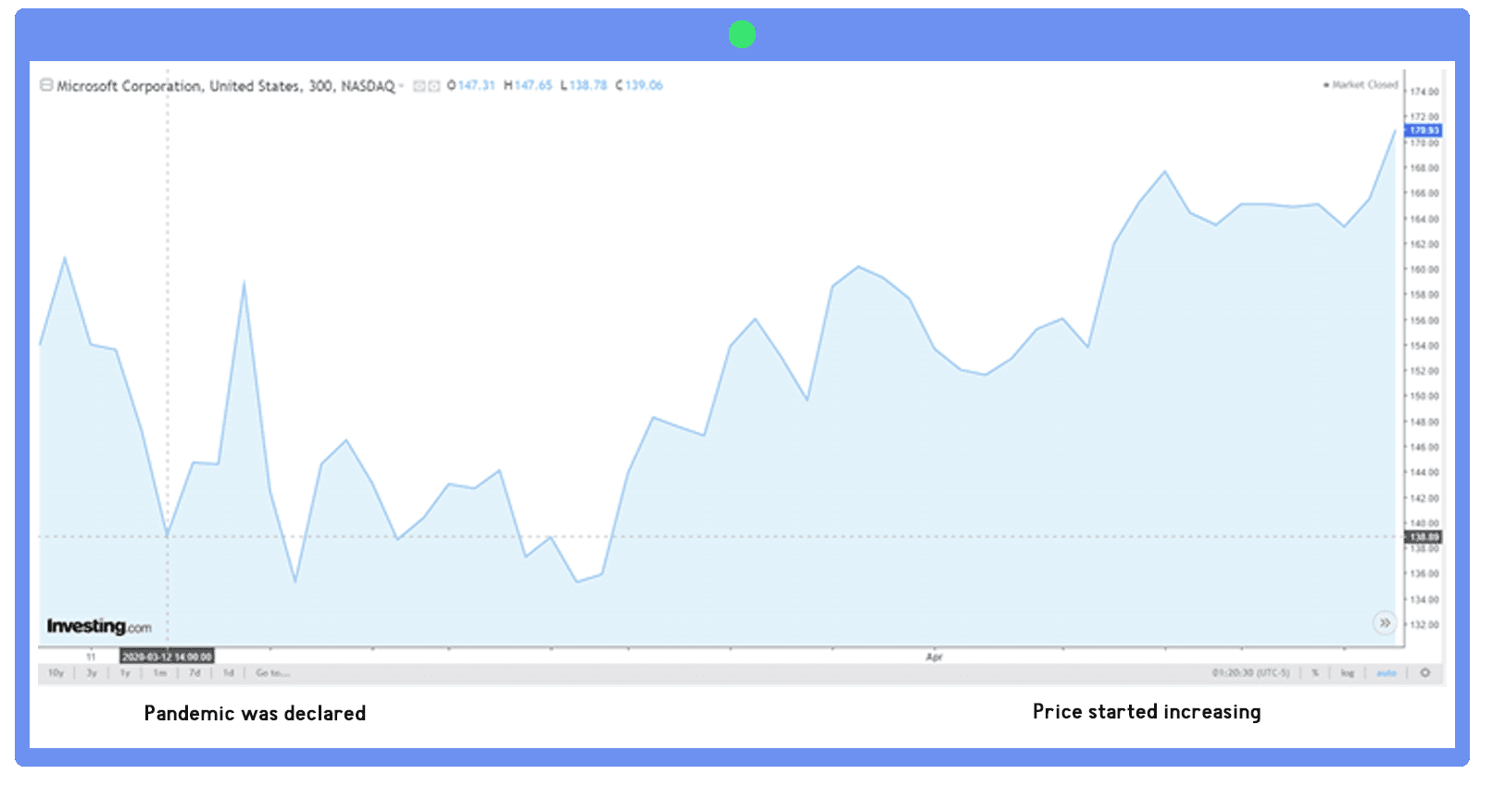
Companies like Microsoft benefited a lot from the news release in 2020. When Covid-19 was officially announced as a pandemic, more people started using virtual means of communication, and corporations went for online meetings and interviews.
This caused Microsoft’s stock price to increase from $135 to $210, or around 50% growth between March and December 2020.
Another type of news that can affect the stock price of a certain corporation is the earnings reports. Such reports give hints about the financial performance of the company.
If a company announces earnings that are below expectations, it will indicate that it is not as profitable and will incur increased costs, driving its stock price down. As a result, shareholders will start selling their stock, pushing the stock price lower.
Some traders enjoy the thrill associated with this trading strategy, while some traders try to avoid it, let’s see some pros and cons of this strategy.
Advantages:
Disadvantages:
This trading strategy implies opening and closing trade positions on both ends of the trend. By that, the trader buys an asset when the stock price is increasing and sells the asset when the stock price is declining.
Price trends fluctuate up and down several times in one day, and to know how you can swing trade, you need to have good analytics skills because you are going to predict the upcoming price movements.
It can be said that this strategy is easy to implement as it does not require the trader to keep watching the news or any event that might be relevant. A trader only cares about the direction of the stock price. However, thorough research is required to be able to predict the movement accurately, because one needs to determine the length of the trend movement.
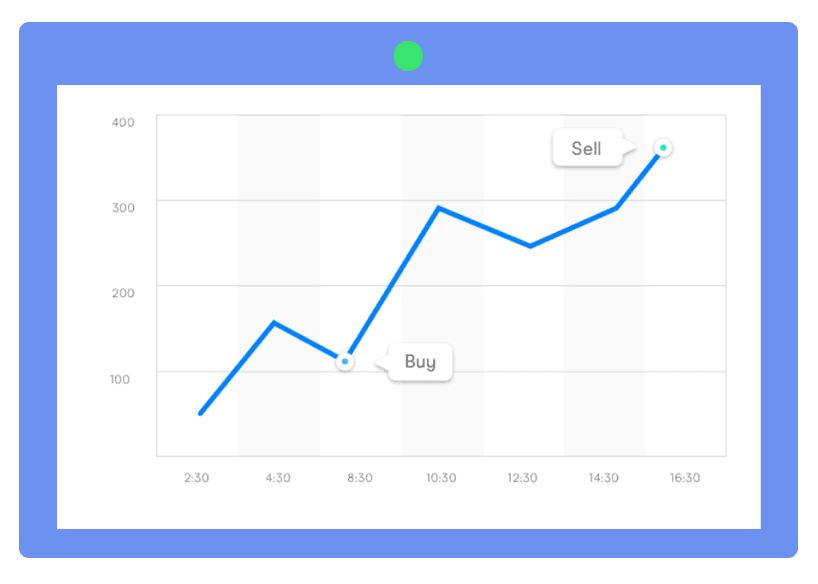
To start swing trading, you need to choose the security that you believe is going to be overbought and increase in value. This is when you enter the market with a buy order. Keep the trading position active as long as the stock price is climbing in value. At the point when the stock becomes oversold, and the stock price starts to surge, you sell the trade position.
The reason this strategy is called swing is that this cycle can occur several times in one day, and traders can buy and sell the trading position as the stock price swings up and down.
This trading strategy might sound simple and might be appealing to all traders, but there are some flaws in using this strategy. Let’s see what they are.
Advantages:
Disadvantages:
Scalping is a very common strategy that is used by many traders regardless of their experience, it is relatively easy to learn how scalping is done in trading. It relies on the accumulation of profits taken from small trades that are taken throughout the day.
As the name suggests, this strategy means picking up small gains and accumulating them over the long term, then collecting reasonable gains by the end of the day. A single scalping activity can be as small as one minute, or 15 minutes maximum.
This strategy is also used by many financial brokers such as Pepperstone broker, who allow their clients to use scalping, and they even explain to traders what are the best practices for scalping. Scalpers enter the market with a buy option when the trend is moving upwards, keep the position open for a very short time, then close the market position when a small gain is realized. 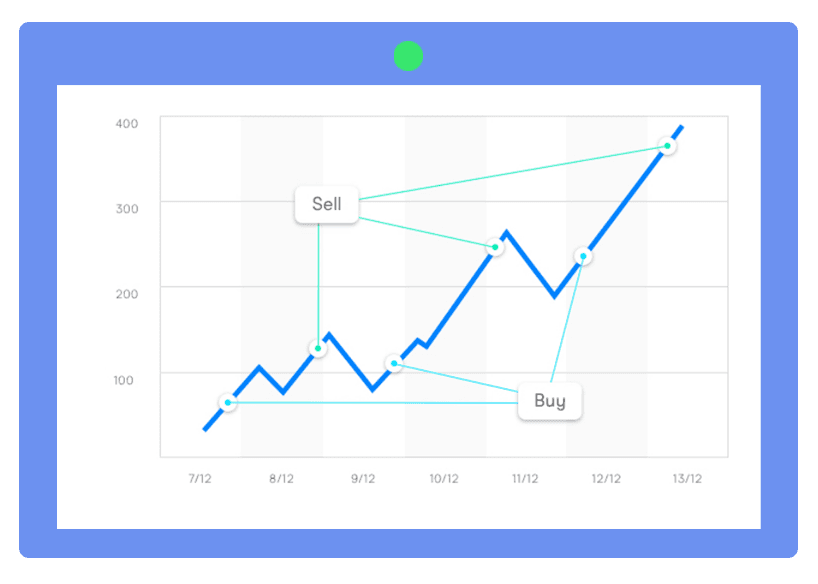
Likewise, a trader may initiate a sell order if the market is moving downwards, and close it after a while under a given timeframe, realizing small gains from this short-term trading activity. Traders repeat this activity several times in one day, accumulating these small profits over time, which might be significant if the trader was lucky enough.
Since this strategy is short-term focused, it can be considered the type of trading that is best for beginners, because traders are unlikely to lose a huge amount of money in this little timeframe.
To start scalping, you need to choose the right security. The best choice would be to pick up a volatile asset. Scalping relies on price changes in a short period of time, and volatility can help the trader gain more pips from short-term fluctuations.
Take into consideration that when you open a market position there is a spread that needs to be paid to the broker. Therefore, it is important to find a tradable asset or a broker with a narrow spread range, so you don’t end up paying all your gains as commission to the broker.
When we compare which type of trading is less risky, some argue that scalping is the best option, as traders do not risk a lot of money, however, there are some other flaws that can deter traders from using this strategy.
Advantages:
Disadvantages:
Day trading is another strategy that is used by many traders, especially those who want to avoid the risk of leaving the trading position open overnight. This strategy implies entering the market at the beginning of a business day and leaving the market at the end of the same day.
This is one of the strategies that most traders use for Forex and stocks because it does not require them to keep their eyes on their investment the whole time. Traders can enter the market and get busy with other life issues until the end of the trading session is approaching.
Day traders do not care about the intraday price fluctuations as they focus on the end-of-day results. However, some traders prefer to keep their eyes on the charts to react if the market collapses or a bear market suddenly turns bullish.
Therefore, day traders need to pick the tradable instrument very carefully and not trade something that is extremely volatile where the price can dip heavily. On the other hand, assets that are not volatile at all will not yield any considerable gains. For that reason, some traders prefer holding multiple market positions that vary in volatility levels, and market factors, and are not interconnected.
During day trading, some tools can be used to better predict price movements. One of the best daily trading strategies is using moving averages, where the projected price direction is estimated based on historical price movements.
Day trading might seem ideal to avoid some risks, however, there is also an opportunity cost that the day trader is paying. So, let’s check what are some of the benefits and drawbacks of day trading.
Advantages:
Disadvantages:
This trading strategy is followed by traders who are not in a hurry for their gains and this is usually done by running a trading position in the market for a long period of time.
A position trader chooses a security that works better in the longer term and initiates a buy order in the market, then leaves the position open for several weeks, or even months.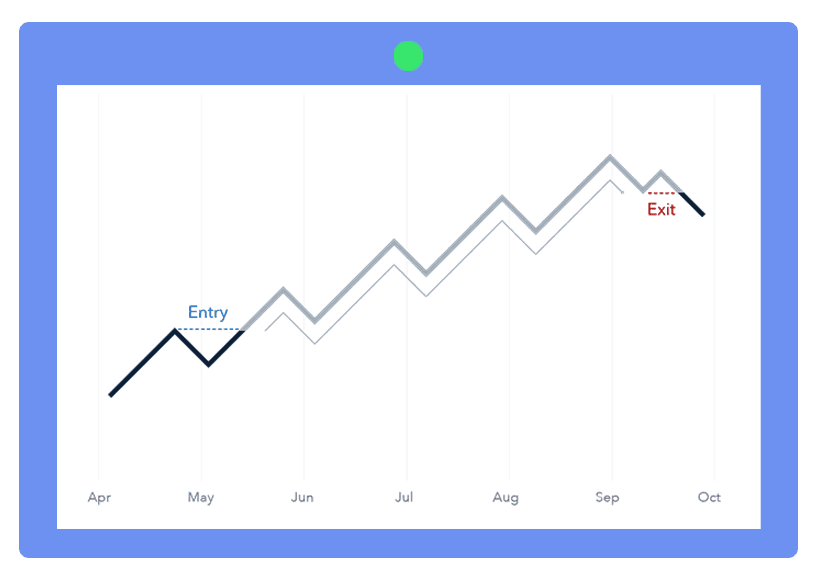
When running a trade for several months, traders ignore the day-to-day fluctuations that take place in the market, and they tend to focus on the end result of the stock's movement.
Traders prefer this strategy because it does not require them to take immediate action on their trades, and this strategy has the greatest gain potential if the trader selects the right asset.
For example, if a trader opened a position in the stock market to buy a Tesla Inc (TSLA) stock in March 2020 when the TSLA stock price was sitting at $85, six months later, the TSLA value increased by around 480%. This means that by September 2019, the trader’s investment would equal $407 for holding the market position for a long period of time.
However, it might not be easy to project the price movement in the future. A trader is required to conduct long research, and choose very carefully between different financial instruments.
Leaving the market position unattended for a long time can be risky, which is why some traders avoid this practice. Like any other strategy, there are some pluses and minuses with this.
Advantages:
Disadvantages:
This strategy can be described as the most effortless trading strategy. The trader logs in by the end of the trading session to open a position in the market and leaves it open until the next day.
By the end of the trading day, the stock price movement is more or less determined. Traders check the price movement during the day, then start trading according to the projected price movement.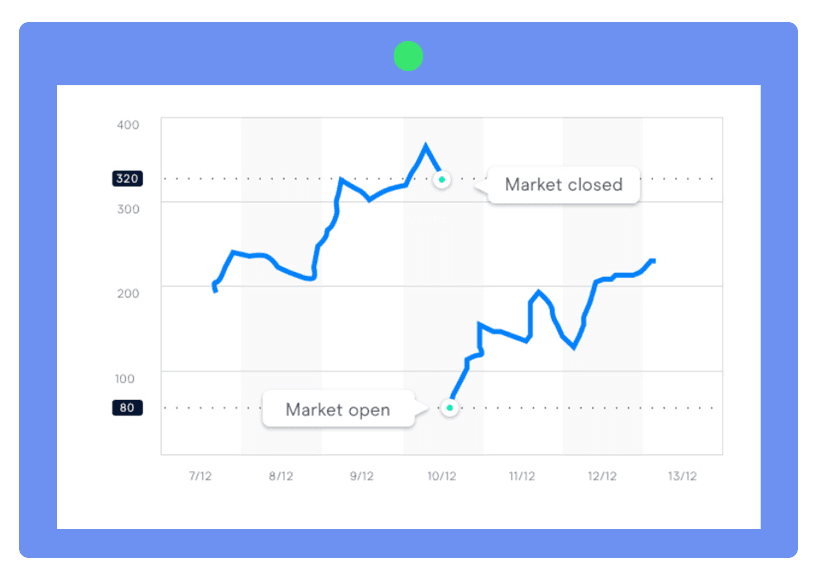
The price movement is estimated based on the end-of-day activities of the previous days. The trader compares the historical price movements and then decides whether a buy order or a sell order needs to be executed in the market.
This strategy is used by most traders who cannot dedicate so much time during the trading day, or due to time zone differences, therefore, they become active when the market is settled down.
One of the benefits of using this strategy is that it requires less commitment time by the trader, and those who use this strategy do not get involved in the heated hours of the trading session, and additionally, avoid the intense price fluctuations.
This strategy might be costly and risky, considering the overnight swap fees, and the fact that at midnight when the trader is sleeping, the stock price might move in an unfavorable direction. Therefore, traders are recommended to use some risk management tools and indicators. The stop-loss order can be very handy here, a trader can set a stop-loss level in order to limit the amount of money that may be lost.
Some traders might be forced to use this strategy due to time constraints, while other traders prefer it over other trading strategies, let’s see what are the benefits and drawbacks:
Advantages:
Disadvantages:
Bollinger Bands are a type of indicator based on technical analysis of the price's volatility. It is named after its creator John Bollinger, who invented it in the 1980s.
It is mainly an indicator that can be used alongside any strategy and helps the trader to find the range within which the price is more likely to fluctuate, to better estimate the next price movement.
Bollinger Bands consist of two bands, an upper band, and a lower band, and the market trend moves between these two bands. This indicator is used widely by traders, and reliable brokers, such as Avatrade, that try to teach their clients how to excel at using this indicator.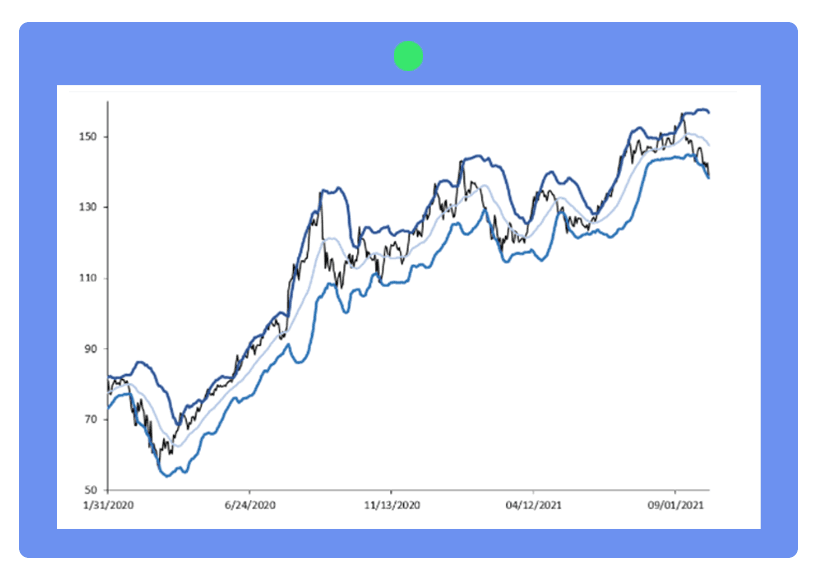
Avatrade offers using Bollinger Bands with any financial instrument, whether for cryptocurrency or Forex markets or even when one is choosing option trading.
The upper band represents the estimated maximum price increase a market could gain when a stock is overbought, the price trend will breach the upper band and is more likely to change its direction downwards.
On the other hand, the lower band represents the estimated lower limit a price will reach. When a stock is oversold, the price trend will more likely break the lower band, and the price is set for a rebound.
Using this tool can make any trading type less risky, this indicator helps the trader predict the price volatility, and it shows the level where the price is more likely to change direction.
The Bollinger bands squeeze and contract in response to market volatility. When the two bands come closer to each other it indicates a less volatile market. When the two bands separate further from each other, it means there is a wide range of volatility in the market.
Bollinger Bands can be very useful, but there are also some drawbacks to using this tool with any trading strategy.
Advantages:
Disadvantages:
Trend trading is a strategy used by a large number of traders. It implies finding the common trend in the market, and following it, in an implementation of the metaphor “the trend is your friend”.
Trend traders need to use some trading tools and signals in order to locate a trend. Indicators like the relative strength index and moving averages can help the trader understand the trend direction.
Once a trend is located in any given market, the trader may execute a buy/sell market order, and keep it alive as long as the trend is moving in the same direction. Once an indicator signals that the trend is going to change direction, it is time for the trader to sell and close the trading position.
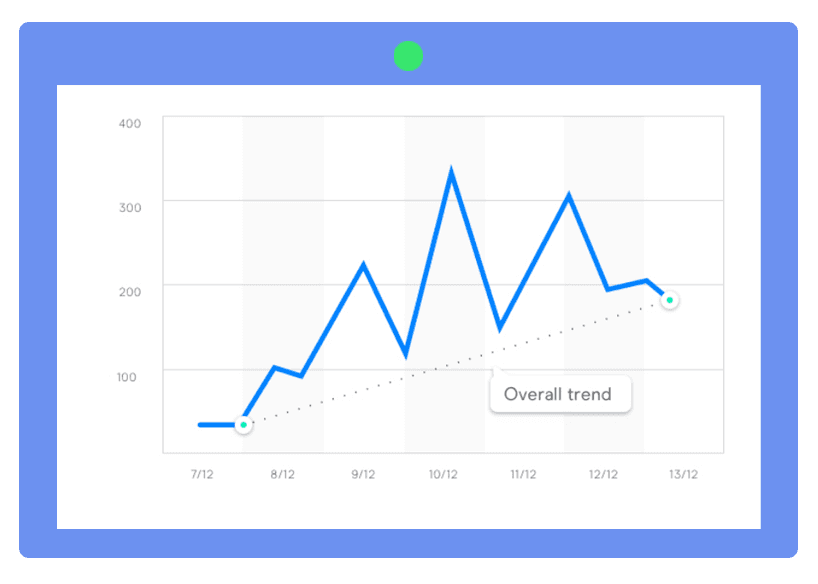
Traders who follow the trend, do not really need to know why the trend is moving in such a way, or what the reasoning behind the movement is. Rather, traders only need to have accurate signals and indicators that suggest when to check in and check out from the market.
However, the trend trading strategy can be a double-edged sword, a trader can maximize their gains if the stock continues growing in its trend, but it is possible that the trend could be misleading.
The risk here is when a market trend grows in one direction, a trader may decide that it is the best time to invest, and very soon after, that stock might crash and lose the majority of its value. This is similar to what happened in the GME short squeeze.
In order for a trader to cushion any sudden crash in the market following a trend, a trader can fix a trailing stop-loss option, which can help the trader limit their losses in a variable way.
Traders can gain hugely when they keep investing in a growing trend, because this tempts other investors to buy more stocks as well, and push the stock value higher, which makes this strategy the best for stock trading. However, it is not easy to find a trend. Traders need to keep their eyes on the investment, and how it is growing, and react according to market updates. Thus, trading this way requires attention to details, news, reports, and press releases to be able to analyze and react as soon as something changes in the market direction.
As easy as trend trading might seem to be, there are some considerations that every trader needs to be aware of. The pros and cons of trend trading include the following.
Advantages:
Disadvantages:
Our partner, XM, lets you access a free demo account to apply your knowledge.
No hidden costs, no tricks.
On average, six months to one year of active trading is the period before excelling in day trading. Given the fact that a trader needs to theoretically cover all aspects of trading and what the different financial are instruments.
Scalping can be the best option for beginners. Most new traders start with a limited budget, and with the scalping strategy traders are not likely to lose a large amount of money. In addition, the swing trading strategy can be recommended for beginners, this strategy implies opening a market position when the market is moving upwards, and closing it when the market changes direction.
The scalping strategy can be considered less risky compared with other trading strategies. Scalpers enter the market and leave after tight timeframes from 1 minute to 15 minutes. During these timeframes, it is unlikely for a trader to lose a lot of money.